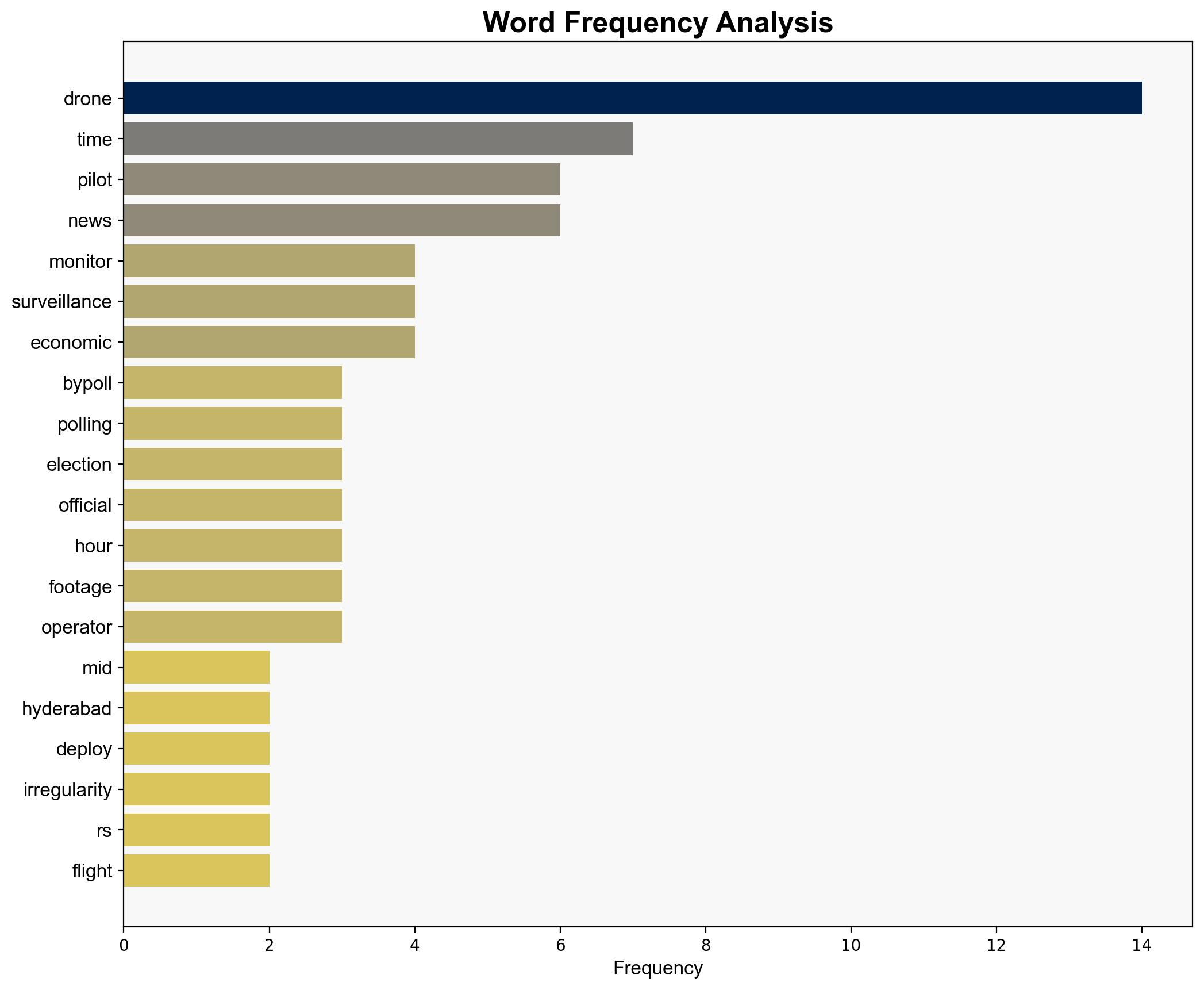Who knew kites could beat Rs 25 lakh drones Hyderabads bypoll chaos explained – The Times of India
Published on: 2025-11-12
AI-powered OSINT brief from verified open sources. Automated NLP signal extraction with human verification. See our Methodology and Why WorldWideWatchers.
Intelligence Report: Who knew kites could beat Rs 25 lakh drones Hyderabads bypoll chaos explained – The Times of India
1. BLUF (Bottom Line Up Front)
The strategic judgment is that the disruption of drone surveillance during the Hyderabad bypolls was likely a deliberate act of sabotage aimed at undermining electoral integrity. The most supported hypothesis is that local actors, possibly with political motivations, orchestrated the incident. The confidence level is moderate due to limited evidence. Recommended actions include enhancing drone security protocols and conducting a thorough investigation to identify and prosecute those responsible.
2. Competing Hypotheses
Hypothesis 1: The disruption was an intentional act of sabotage by local actors with political motivations to undermine the electoral process.
Hypothesis 2: The incident was a random act of vandalism by individuals with no specific political agenda, exploiting the opportunity presented by the presence of drones.
Hypothesis 1 is more likely due to the strategic timing and location of the incident, which suggests a calculated effort to impact the bypolls. The use of kites to disable drones indicates knowledge of drone operations, supporting the notion of premeditated sabotage.
3. Key Assumptions and Red Flags
Assumptions include the belief that the incident was not an isolated event and that there is a coordinated effort to disrupt the electoral process. Red flags include the potential for insider involvement, given the precision of the attack, and the possibility of political motivations behind the act. Deception indicators are present in the form of anonymous actors and the use of unconventional methods (kites) to avoid detection.
4. Implications and Strategic Risks
The incident poses significant risks to electoral integrity and public trust in the electoral process. If left unaddressed, it could set a precedent for future disruptions, potentially escalating into more sophisticated attacks. Politically, it could lead to increased tensions and accusations of electoral manipulation. From an informational perspective, it highlights vulnerabilities in current surveillance and security measures.
5. Recommendations and Outlook
- Enhance drone security protocols, including anti-tampering measures and real-time threat detection systems.
- Conduct a comprehensive investigation to identify perpetrators and motives, ensuring accountability and deterrence.
- Engage with local communities to raise awareness about the importance of electoral integrity and the consequences of sabotage.
- Best-case scenario: Perpetrators are identified and prosecuted, leading to improved security measures and restored public confidence.
- Worst-case scenario: Continued disruptions lead to widespread electoral fraud and loss of public trust in democratic processes.
- Most-likely scenario: Incremental improvements in security measures with ongoing challenges in fully preventing similar incidents.
6. Key Individuals and Entities
No specific individuals are named in the source text. The focus is on the roles of drone pilots, election officials, and unidentified actors involved in the incident.
7. Thematic Tags
National Security Threats
Structured Analytic Techniques Applied
- Cognitive Bias Stress Test: Expose and correct potential biases in assessments through red-teaming and structured challenge.
- Bayesian Scenario Modeling: Use probabilistic forecasting for conflict trajectories or escalation likelihood.
- Network Influence Mapping: Map relationships between state and non-state actors for impact estimation.
Explore more:
National Security Threats Briefs ·
Daily Summary ·
Methodology





